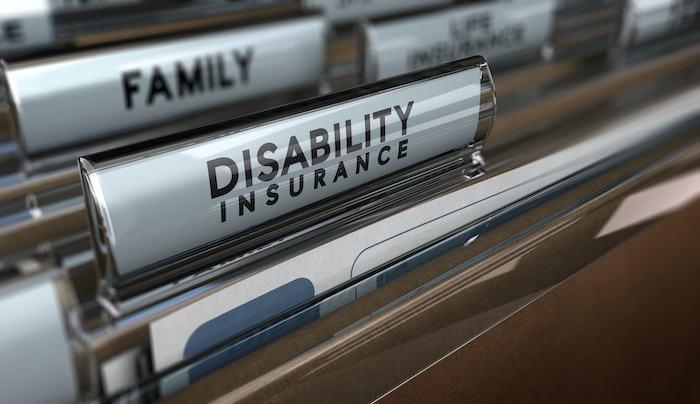Key Things to Know About Disability Insurance

There are disability benefits that come from the government, in the form of SSDI or SSI, both of which are Social Security programs that are difficult to qualify for.
There’s also private disability insurance, which is what’s talked about in more detail below.
The Basics
If you’re hurt or you become ill and it didn’t happen at work or within your job role, then you won’t have coverage from worker’s compensation. Your health insurance policy, if you have one, will cover your medical bills, but you’ll have to deal with lost wages during your recovery.If you have private disability coverage, it can give you economic relief while you can’t work. The coverage allows you the ability to recover from your injury or illness without such a persistent worry about missing work or losing income.
Some employers offer this type of private insurance coverage as part of your benefits package, but other people who don’t get it from their employer buy it on their own.
There are actually many subtypes of disability insurance including:
- Long-term disability insurance: This pays out monthly benefits if you get too sick or you’re too disabled to work. The benefit period can last five or 10 years, or up to retirement. The monthly benefit is up to 60% of your gross monthly income. The cost of long-term disability insurance is usually anywhere from 1% to 3% of your salary. Even within the subcategory of long-term disability insurance, there is any occupation disability insurance and own-occupation disability insurance.
- Short-term disability insurance: Short-term disability insurance is similar to long-term disability insurance because it can replace up to 60% of your income pre-ta, if you’re unable to work because of an injury or illness. The big difference is that the coverage lasts for only a brief period of time, which is usually up to a year.
- Supplemental disability insurance: This covers any gap that might exist between benefits paid by an employer-sponsored disability plan and the full money that you’re going to need to cover expenses when you can’t work.
Around 60% of applications are denied initially, and the average payout isn’t much more than $1,000 a month.
Whenever it’s an option, private disability policies are better.
Why Would You Need Disability Insurance?
If you’re young or healthy, you may think the potential that you wouldn’t be able to work due to illness or injury is far-fetched. However around one-in-four people will experience a disability lasting 90 days or more before they reaching the age of 67.How Do You Get Disability Insurance?
One way to get access to the benefits of disability insurance is to sign up for coverage offered by your employer. Many employers will pay some or all of the costs of premiums for their employees.There are five states that require employers provide short-term disability coverage to employees. These states are California, New Jersey, New York, Hawaii and Rhode Island.
You can also buy the coverage through your workplace. This would mean that your employer doesn’t pay for your coverage, but it’s part of a voluntary benefits package option. The benefit for employees is that they can get group rates when they buy coverage.
You can use your membership or affiliate in a professional association to get coverage at lower group rates.
You can also purchase an individual private disability insurance plan directly from a broker or through a company.
What to Know About Buying Your Own Policy
If you’re going to buy your own disability policy, for example because your employer doesn’t offer it or you’re self-employed, then know that you generally can’t replace more than 75% of your income from all of your coverage together.When you buy your own policy, you can choose the features that are most relevant to you and customize your plan. For example, some plans will let you add on an annual automated cost-of-living adjustment, so the insurance will cover your needs as they change over time.
The price, annually for private disability insurance if you’re going to be paying for it is usually anywhere from 1% to 3% of your yearly income.
As with other types of insurance, there are some factors that impact the cost, including your age and health, your gender and whether you smoke.
Your occupation is relevant. For example, you might pay more if you work in a high-risk job.
The broader a policy’s definition of a disability is, the higher the premium is likely to be. You might for example pay more if you get a policy that will cover you if you can’t work at your current job, but you could work in a lower-paying job.
The more income you’re protecting with coverage, the more you’re going to pay, and the longer the length of benefits you want, also means the more your premiums will be.
There’s an elimination period to know about. You can reduce your premiums when you buy disability insurance by increasing your waiting period, which is how long you have to wait before your coverage benefits kick in.
Overall, buying private disability insurance if it’s not something your employer offers can be a good decision. In fact, it can be one of the most important investments you make, because you never know what’s going to happen in life, and you don’t want to find yourself in a situation where you can’t cover your expenses or take care of your family because of an accident or injury.
Do You Need An Attorney?
If so, post a short summary of your legal needs to our site and let attorneys submit applications to fulfill those needs. No time wasted, no hassle, no confusion, no cost.

